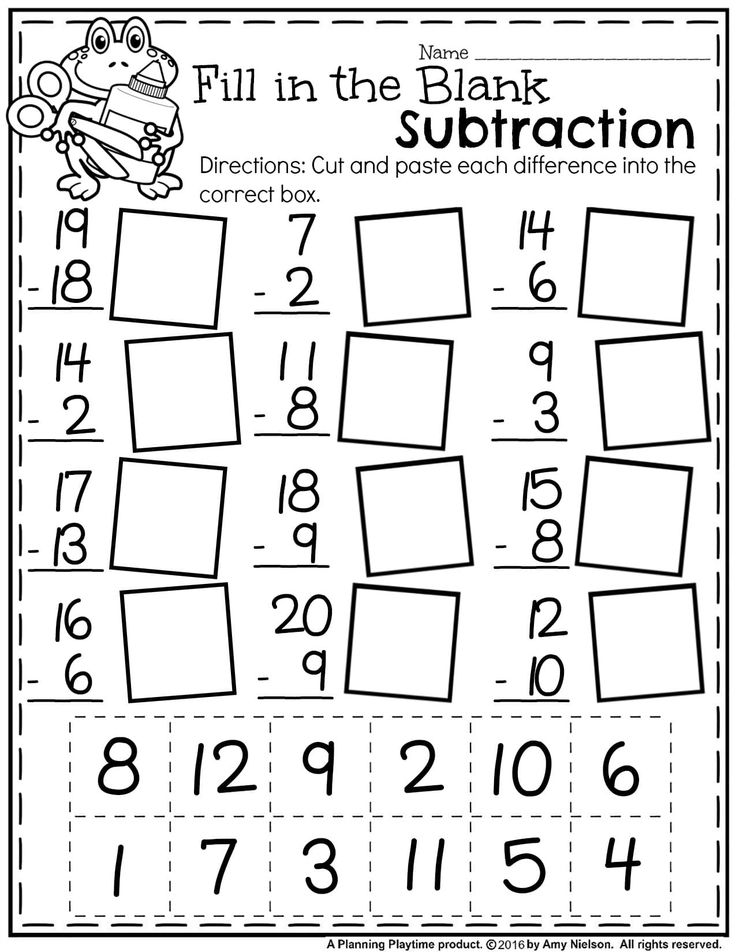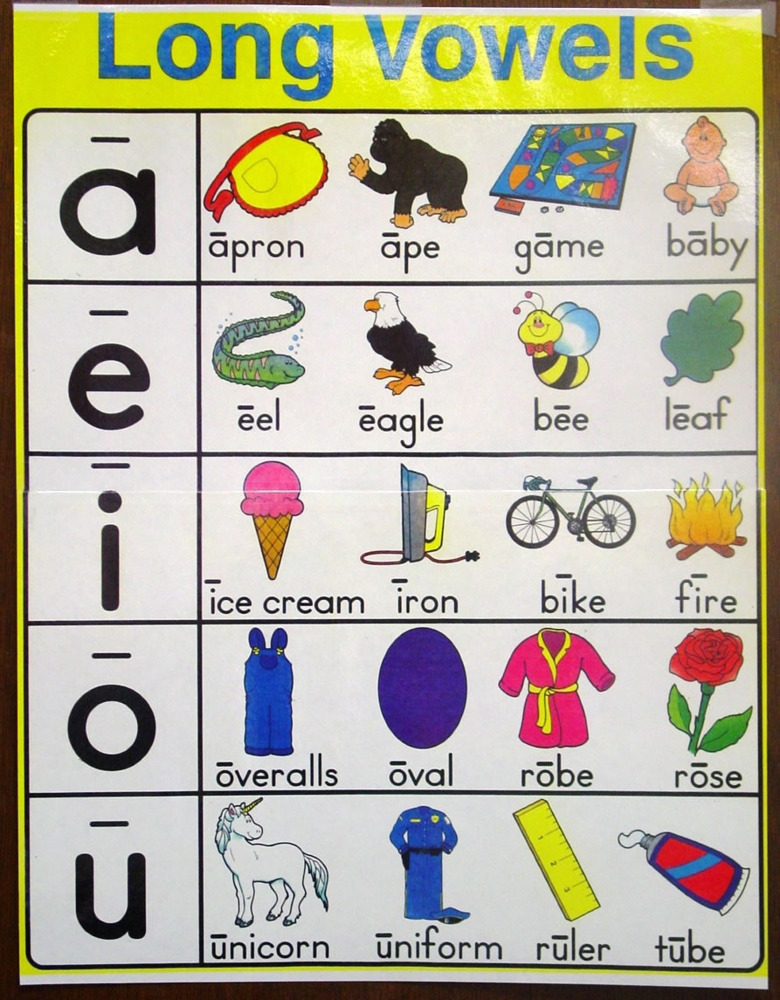8 month old baby learning videos
Top Learning And Educational Videos For 0-12-Month-Olds
Almost any activity you do - whether that's pointing at a picture, singing nursery rhymes or explaining what you're doing as you do it - is a valuable learning opportunity for a baby.
From the moment they are born, a baby will begin to soak up images, sounds and information from their environment, and so educational videos are an excellent way to teach them more about the world they live in.
Videos for babies often focus on high contrast patterns and shapes, as these are simple yet engaging. Parents understand that young children can become easily overwhelmed, as their developing brains have to process huge amounts of data and information - and so these simple, graphic videos that show moving pictures and patterns allow their brains to rest - relaxing into a more
meditative state. Whilst these videos might look boring to us, they can be soothing and engaging to a baby's developing brain.
We have gathered a list of thirteen educational videos that have been specifically designed to stimulate, entertain and educate very young minds.
ABCs and 123s: Educational Content for Baby
Sparkabilities Babies, by Sparkabilities
Sparkabilities is one of the best resources for educational videos. The YouTube channel is dedicated to teaching babies and young children the building blocks of knowledge, such as their ABCs and 123s, as well as colours, shapes, music, reading and maths. The channel has lots of different playlists, which are split by age - and the videos for babies that are 0 - 12 months have been designed with lots of colour and sound effect that emphasise sensory play and learning. Sparkabilities Babies is a 23-minute video that combines simple, graphic shapes, with colourful patterns and real-life images and footage. There are also elements of sign language, as well as more complex visuals that show how a flat oval shape can be transformed into a face or how a drawing of a diamond shape can become a colourful 3D jewel.
Baby Sign Language Basics - My First Signs: See and Sign with Baby, by Baby Einstein
Babies learn to communicate at a very young age, and though it may take them longer to replicate what they have learned, they soak up information and begin to communicate from 6 months old. This playful video is a great way to help their development, as it introduces 20 common words and phrases in both spoken and sign language. Help your children to express themselves before they have fully mastered verbal communication with this amazing educational resource that features a puppet show and a range of real-world images. Designed to teach you and your baby new and powerful ways to interact and communicate together.
Story Books for Babies
The Very Hungry Caterpillar, by Illuminated Films
Your baby will be enchanted by the beautiful visuals that accompany this classic children's story. Illustrated in the same style as the book, there are lots of colours, shapes and patterns to keep baby entertained, whilst being an opportunity for sensory learning - and the calming voice-over makes it a brilliant choice for
winding down before a nap.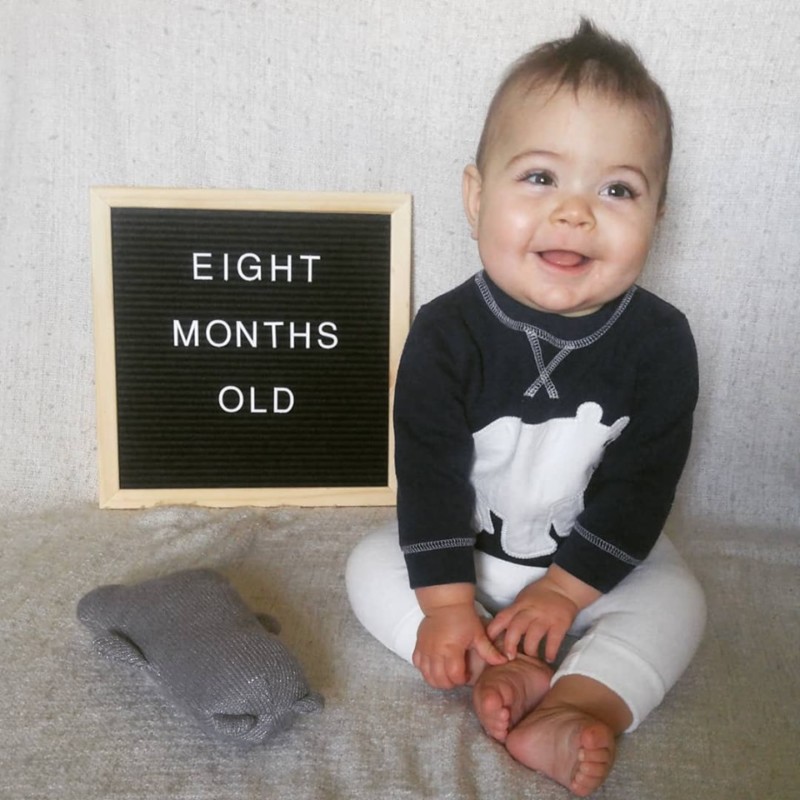 Other videos that are available on the Illuminated Films YouTube channel include The Mixed-Up Chameleon and The Very Quiet Cricket, all of which have the same soothing tone and captivating visuals.
Other videos that are available on the Illuminated Films YouTube channel include The Mixed-Up Chameleon and The Very Quiet Cricket, all of which have the same soothing tone and captivating visuals.
Sensory Videos and Abstract Images
Hey Bear Sensory Rainbow Dance Party by Hey Bear Sensory
Hey Bear Sensory offers lots of brilliant sensory videos for babies. Designed especially for very young children, lots of the videos on the Hey Bear Sensory channel are made in black and white, or with very high-contrast imagery, as this is best suited to newborns and very young children whose sight is still developing. Each video is an opportunity for your baby to learn lots of new visual information, which encourages eye coordination and focus in the first, formative months of their lives.
Baby Sensory 1 Hour Dancing Dots, by Siris06 C
The content couldn't be more simple - just black and red dots bounce around on a white background. But simplicity is key - and lots of parents report that their baby is hypnotised by the dancing dots, ceasing to cry or even falling asleep to this hour-long video. There are shorter 5-minute and 10-minute versions, but if your baby enjoys the song and the dancing dots, then the longer version might be best.
But simplicity is key - and lots of parents report that their baby is hypnotised by the dancing dots, ceasing to cry or even falling asleep to this hour-long video. There are shorter 5-minute and 10-minute versions, but if your baby enjoys the song and the dancing dots, then the longer version might be best.
Classical Music for Babies
Baby Sensory - Bach for Baby Brain Development, by CheriEbooks - Kids Learning
Combining classical music by J.S. Bach with high-contrast moving images, this video is a brilliant choice for very young viewers. The 13-minute long video has a soothing effect on parents and babies alike, and the simple, graphic images include numbers and patterns, as well as animals, flowers and other shapes that kids will find fascinating.
Other videos on the CheriEbooks - Kids Learning channel see high contrast imagery set to music by Bach, including colourful cats, dancing dinosaurs and other animals that move around the screen in time with the soothing classical music.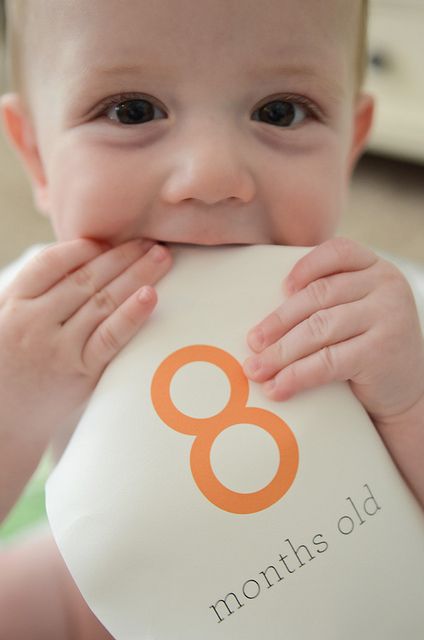
Baby Sensory - Colour Animation 4 - Spirals - Infant Visual Stimulation, by Tiny Adventures TV
Set to songs by Mozart, your baby will love watching the simple graphics moving across and around the screen. Designed to captivate a baby's attention, the content encourages visual and auditory development in young children - stimulating, soothing and entertaining all at once. Newborns cannot see as clearly as older children, and so this video is mostly in black, white and red - as well as other bright colours - so that even the youngest viewers can appreciate the music and images. Baby sensory videos are believed to help a child's brain and eye coordination get better, as well as increasing baby's curiosity, focus and memory.
Mozart for Babies Brain Development, by SS.Channel Eng
This beautiful video combines the music of Mozart with calming, blurry visuals that twinkle and sparkle. The three-hour-long video is a perfect choice for baby and parent - having a soothing effect on both - and the uninterrupted calm makes it suitable for nap time or winding down at the end of the day.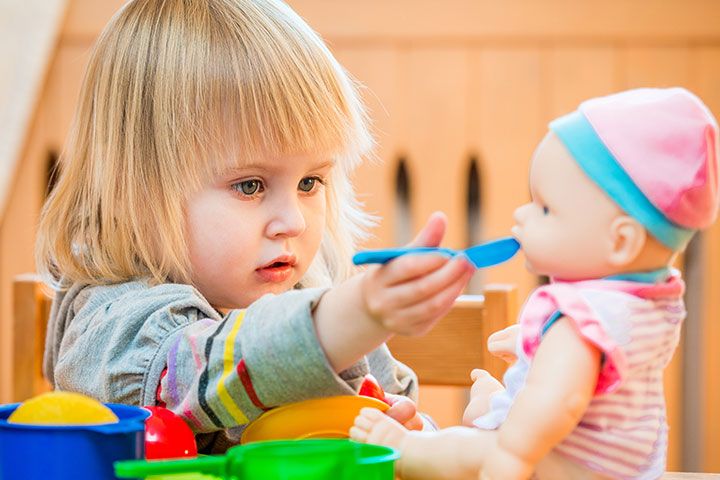
Baby Einstein Baby Mozart Music Festival - Full Episode
The video shows a selection of complex, satisfying scientific objects and images, like planets rotating, and gyroscopes moving and interlocking circles. Unlike the other uninterrupted visuals, this video has a more 'show and tell' focus - showing lots of different toys, animals and objects - to entertain rather than hypnotise young viewers.
Disclaimer
At Kidadl we pride ourselves on offering families original ideas to make the most of time spent together at home or out and about, wherever you are in the world. We strive to recommend the very best things that are suggested by our community and are things we would do ourselves - our aim is to be the trusted friend to parents.
We try our very best, but cannot guarantee perfection. We will always aim to give you accurate information at the date of publication - however, information does change, so it’s important you do your own research, double-check and make the decision that is right for your family.
Kidadl provides inspiration to entertain and educate your children. We recognise that not all activities and ideas are appropriate and suitable for all children and families or in all circumstances. Our recommended activities are based on age but these are a guide. We recommend that these ideas are used as inspiration, that ideas are undertaken with appropriate adult supervision, and that each adult uses their own discretion and knowledge of their children to consider the safety and suitability.
Kidadl cannot accept liability for the execution of these ideas, and parental supervision is advised at all times, as safety is paramount. Anyone using the information provided by Kidadl does so at their own risk and we can not accept liability if things go wrong.
Sponsorship & Advertising Policy
Kidadl is independent and to make our service free to you the reader we are supported by advertising.
We hope you love our recommendations for products and services! What we suggest is selected independently by the Kidadl team.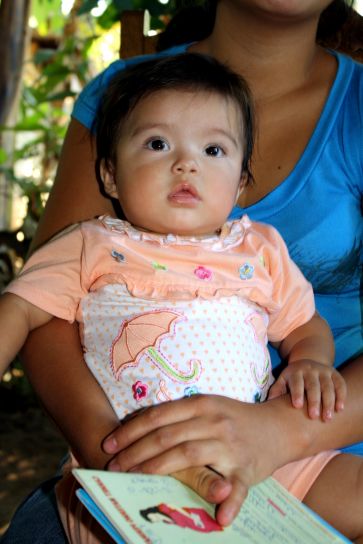 If you purchase using the buy now button we may earn a small commission. This does not influence our choices. Please note: prices are correct and items are available at the time the article was published.
If you purchase using the buy now button we may earn a small commission. This does not influence our choices. Please note: prices are correct and items are available at the time the article was published.
Kidadl has a number of affiliate partners that we work with including Amazon. Please note that Kidadl is a participant in the Amazon Services LLC Associates Program, an affiliate advertising program designed to provide a means for sites to earn advertising fees by advertising and linking to amazon.
We also link to other websites, but are not responsible for their content.
Read our Sponsorship & Advertising Policy
Screen time recommendations by age: how much screen time is too much
It's easy for kids to rack up hours of screen time a day. But too much screen time can impact a child's development and contribute to weight and sleep problems. Kids younger than 18 months shouldn't have screen time, except for video-chatting alongside adults. Limited, high-quality viewing (with an adult) is recommended for kids 18 to 24 months, and from 2 to 5 years, screen use should be capped at an hour a day.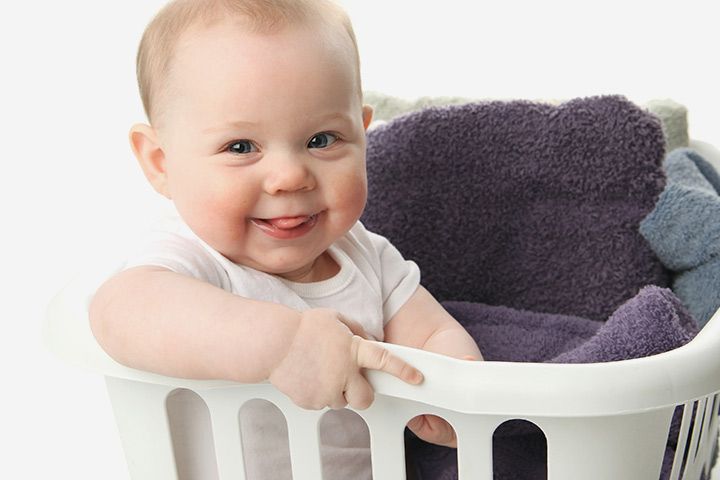 School-age kids need consistent limits, too.
School-age kids need consistent limits, too.
What is screen time?
Any time a child spends looking at an electronic screen is considered screen time. This includes watching videos and television shows, playing video games, and using a computer, phone, or tablet.
And it adds up fast: You might not think twice about letting your child fiddle with your phone or look at a book on your tablet, and it's tempting to share silly YouTube videos or cute photos on Instagram. And then in school or on playdates, your kid may be using devices or playing games they don't have access to at home.
What about video chats with family? Do those count as screen time?
Video chats with family and friends – who live far away or are traveling away from home, for example – are considered an exception to screen time. Unlike screen time that's not interactive, or that a child views on their own, engaging in conversations with caring adults, even over a screen, lets young children practice social skills. And it's been especially useful in helping children maintain relationships with remote relatives because of COVID restrictions.
And it's been especially useful in helping children maintain relationships with remote relatives because of COVID restrictions.
Think about ways to maximize your child's engagement during those valuable chats. You might set up regular video visits with distant relatives and prepare for those visits by having your child make something to show and talk about, or by asking your child ahead of time what they might ask during the chat, for example.
Screen time for kids: How much is too much?
When it comes to raising kids, what's ideal isn't always what's practical. It's true that there are downsides of too much screen time (see below), and giving your child a screen as an easy escape – to calm or distract them when they're bored or restless, for example – robs them of the opportunity to learn how to cope with and move past boredom or emotional discomfort.
But when you're working at home and your child has reached their recommended viewing limit for the day, it's only practical to let them exceed that ideal limit for a bit while you finish up your Zoom meeting. When you're on a trip and your child has reached their screen viewing limit – as well as their car riding limit – it's understandable that you'd make an exception for a few more miles.
When you're on a trip and your child has reached their screen viewing limit – as well as their car riding limit – it's understandable that you'd make an exception for a few more miles.
And, of course, if your child is school aged and participating in virtual learning, chances are their screen time will be beyond what's ideal (though you may want to further limit non-school screen time on school days to balance the scale a bit).
It's helpful to know what's ideal, though, so parents can make informed, balanced decisions for their own families.
Here's what The American Academy of Pediatrics (AAP) recommends for children:
- Younger than 18 months: Screen time is discouraged, other than video-chatting alongside an adult.
- 18 to 24 months: Limited, high-quality programming/apps co-viewed with an adult is best. Solo viewing is discouraged.
- 2 to 5 years: Screen use should be limited to no more than 1 hour a day. Viewing should be interactive, non-violent, educational, and prosocial.
 Co-viewing is recommended.
Co-viewing is recommended. - 5 years and older: Place consistent limits on daily screen time and types of media. Select and co-view media with your child. Teach your child about online safety and respect for others online.
For years, the AAP strictly recommended no screen time before age 2, and less than two hours per day after that. But the group revised its guidelines in 2016 to help parents make more informed choices about how their family uses screens.
How much screen time is common for kids?
According to Common Sense Media, children from birth to age 8 average about two and a half hours of screen media daily. Each day:
- Those younger than age 2 tally 49 minutes
- 2- to 4-year-olds watch two and a half hours
- 5- to 8-year-olds spend just over three hours on their screens
Viewing varies from child to child, though, with almost a quarter of children up to age 8 not watching any screen media and – at the other end of the spectrum – nearly a quarter of them spending over four hours daily on their screens.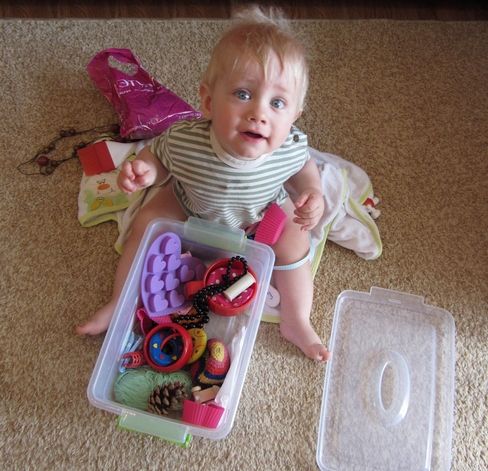
Here's how children spend their screen time:
- 73% TV/video viewing
- 16% gaming
- 3% reading
- 1% homework
- 1% video-chatting
- 6% other/unknown
With so much digital media directed toward kids – from streaming videos to games and educational tools – parents rightly worry how much is too much. Experts also now emphasize that how kids use screens is just as important as how much they use them.
What are the downsides of too much screen time?
There's a strong case to be made that too much screen time can be harmful to kids. Here are some of the top concerns.
Social, emotional, and behavioral development
Parents' biggest worry is how screen time might hurt development, and there is good reason to be concerned. Kids on their screens are missing opportunities to interact with their parents, other adults, and other children.
Studies have shown that children who spend more than the recommended amount of time on their screens are more likely to demonstrate hyperactive and inattentive behavior, act impulsively, and make poorer decisions. Children who watch too much TV early on – in infancy through preschool – show delays in thinking, language, and social skills. And watching violent content may contribute to behavioral problems in children – because they're frightened or because they copy what they've watched.
Children who watch too much TV early on – in infancy through preschool – show delays in thinking, language, and social skills. And watching violent content may contribute to behavioral problems in children – because they're frightened or because they copy what they've watched.
Ongoing studies by the National Institutes of Health (NIH) of more than 4,500 preteens found that those who spent more than two hours a day on screens scored lower on language and thinking tests than those who spent less time on their screens. And those who spend more than seven hours show a premature thinning of the cortex (the outer layer of the brain, which processes sensory information).
Weight issues
Being in front of a screen means your child isn't moving. It may also mean that they're exposed to food advertising and increased snacking while watching TV. Studies have confirmed that too much screen time contributes to childhood obesity and future weight gain, and reducing screen time helps reverse the trend.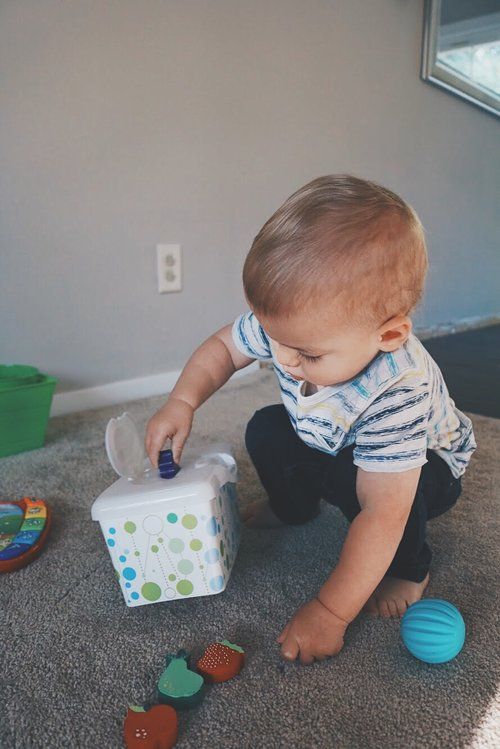
One five-year study of over 3,500 children in eight countries found that children were 16 percent more likely to become overweight or obese for every extra hour of screen viewing. The same study found that every hour less of sleep was associated with a 23 percent increased risk of overweight or obesity.
Read about how consistent bedtimes could lower a child's risk of obesity.
Sleep issues
The more time children spend watching screens – particularly in the evening – the less sleep they get. The AAP warns against keeping screens in kids' bedrooms, noting that even small screens like phones and tablets have been linked to poor sleep quality. The light emitted by screens may delay melatonin release and make it harder to fall asleep. (This is true for adults, too, but children are twice as sensitive to the light exposure.) Content matters, too: Researchers found that preschoolers exposed to violent media had more nighttime sleep problems.
Unhealthy habits
The habit of too much screen time can be hard to break.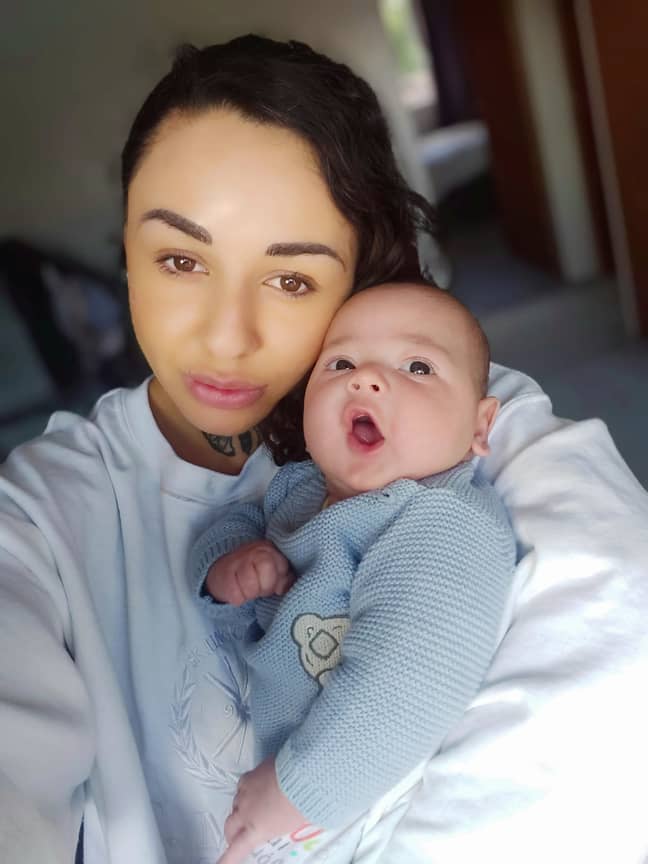 One study found that the more time 4-year-olds spent watching TV, the more difficulty they had taking breaks from screens when they were 6. As kids get older, many parents worry about dependent and addictive tendencies.
One study found that the more time 4-year-olds spent watching TV, the more difficulty they had taking breaks from screens when they were 6. As kids get older, many parents worry about dependent and addictive tendencies.
According to a study of over 40,000 children ages two to 17, children who spend seven hours or more a day on their screens are more than twice as likely than children who use screens for an hour a day to suffer from depression or anxiety. The study also found that high users of media show less curiosity, self-control, and emotional stability.
Screen time isn't all bad. But your child should still have plenty of time for other, healthful activities, such as active play, reading, and interacting with others.
How can I set manageable screen time rules for my family?
Little to no screen time may sound like a great goal, but reality tends to get in the way of a parent's best intentions. Maybe you started out by banning TV, but then your preschooler found your iPad and is now tapping and swiping like a pro. Or maybe the rules you carefully established with your first child got bent – or tossed entirely – by the time your second child came on the scene.
Or maybe the rules you carefully established with your first child got bent – or tossed entirely – by the time your second child came on the scene.
Screen time almost inevitably increases as kids get older. Figuring out what's best for you, your child, and your family feels like picking through a media minefield, says Lisa Guernsey, coauthor of Tap, Click, Read: Growing Readers in a World of Screens. Technology is moving fast, and with so many new products designed for and marketed to young kids, parents often end up feeling guilty or overwhelmed.
The problem for many well-meaning parents is that rules limiting or prohibiting screen time can be rigid and hard to enforce. What to do? Guernsey suggests using the "three C's" to help you decide when screen time is okay:
- Content: What is my child watching or playing? Can they understand what they're doing or potentially learn from it?
- Context: What has my child's day been like so far? Have we talked and interacted a lot, or have they been plugged in for hours?
- Child: How does your child respond to screen media? When screen time is over, are they bursting with new ideas and questions they want to explore? Or do they become irritable, anxious, or withdrawn? Why is your child drawn to particular media, and what are they getting out of it?
"Thinking about the three C's in the moment, when you're trying to decide whether to let your child play with a tablet or watch a show, helps you make better, more mindful choices," says Guernsey.
To identify your priorities and develop strategies that might work for your family, try using the AAP's online tool for coming up with a family media plan. You can personalize it according to your children's ages, your values, and your family's routines.
What qualifies as "educational" screen time?
High-quality media can help children develop important skills, and there are some great games and apps on the market that support reading, math, and other skills. "We have some really nice evidence that kids are able to learn from a video or game that's been well designed," says Guernsey. The tricky part, however, is sorting the good stuff from the bad.
There are no standards that app developers need to meet in order to market their products as educational, and most are made without following a curriculum or using input from experts in education or child development. You can try to assess what's appropriate for your child's age and stage, but it's hard to judge what might contribute to real learning.
Here are some tips for evaluating a program or app for your child:
- Preview before playing or watching. Preview videos and apps before introducing them to your child, and choose ones that encourage your child to actively participate. Look for interactive elements that support learning and strategic thinking. Look for choices that teach good values. Watch and play side-by-side with your child to make the most of the experience.
- Reinforce in real time. To make the most of high-quality learning games, pay attention to what your child is doing, and reinforce the lessons when screen time is over. For example, if your child plays with an app that focuses on identifying patterns, encourage them to find patterns around your home, or create a simple pattern with blocks or other toys. If they watch a video teaching letter recognition, help them recognize letters in books and on signs.
- Look for well-crafted stories and games.
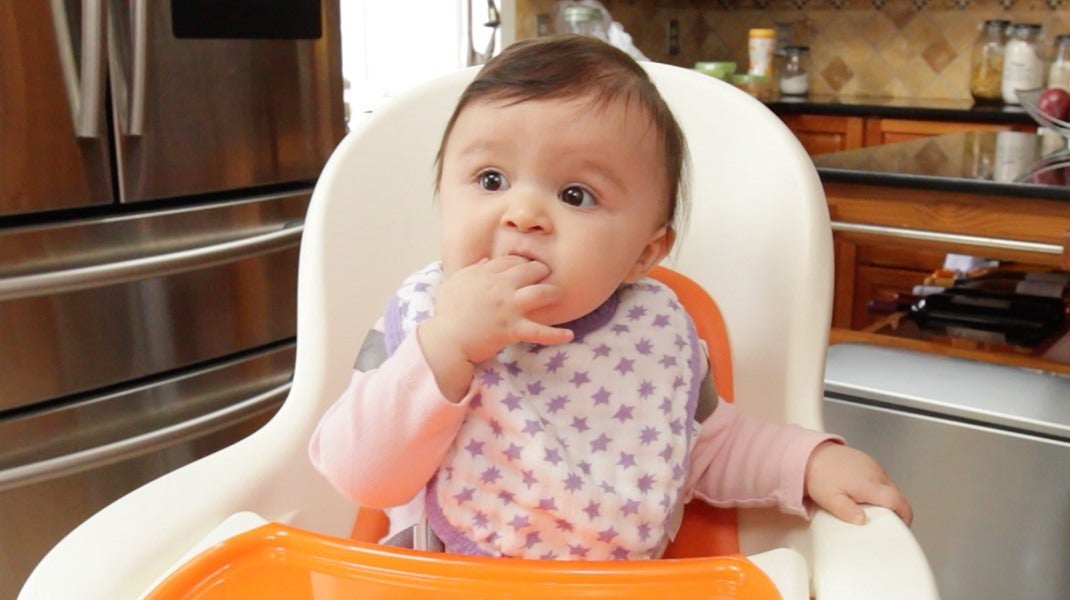 Avoid apps that require your child to mindlessly swipe the screen or feature distracting graphics. Pay particular attention to "hot spots," which are random opportunities to click on things that aren't related to the story or game. (Free games and apps raise a red flag because your child may end up with annoying and sometimes inappropriate banner ads.)
Avoid apps that require your child to mindlessly swipe the screen or feature distracting graphics. Pay particular attention to "hot spots," which are random opportunities to click on things that aren't related to the story or game. (Free games and apps raise a red flag because your child may end up with annoying and sometimes inappropriate banner ads.) - Check reviews. Common Sense Media evaluates games and apps for age-appropriateness and educational value, and you can check out our tips for choosing computer games as well as the best TV shows for children and most engaging apps.
Even if you load your child's tablet with what you believe are age-appropriate apps, games, and e-books, the reality is that devices can be distracting. Kids are quick to jump from one game to another or just mindlessly click around. And screens entice kids away from time spent with books, toys, sports and outdoor play, arts, and each other's company.
Are e-books just as good as print books?
E-books have their limitations. Researchers have found that interactive storybooks can be distracting for both parents and children, making reading together a less enjoyable and enriching experience. Children and parents ask fewer questions, and kids have trouble following along when reading an e-book together.
Researchers have found that interactive storybooks can be distracting for both parents and children, making reading together a less enjoyable and enriching experience. Children and parents ask fewer questions, and kids have trouble following along when reading an e-book together.
Your child will get the most out of any reading experience if you sit with them and talk about what's happening. ("What might happen next? Remember when you tried strawberry ice cream too?") Digital books often involve lots of fun buttons, lights, and noises, and it's easy to get distracted by the device rather than focusing on the story.
The lesson here is there's nothing wrong with the occasional e-book, but keep reading traditional books to your child. And when you do turn to tablets or apps for reading:
- Treat the stories the same way you would a story in a regular book: Ask questions, make observations, and get your child involved.
- Choose e-books that aren't too distracting (don't have too many embellishments, such as noises or flashing lights)
When are kids getting their own cell phones and tablets?
A BabyCenter survey found that phones and tablets are commonplace among the little-kid set: About 85 percent of parents allow their children ages 2 to 8 to use their phones, and nearly half of kids that age have their own tablet. Some start with "kiddie" versions, like the LeapPad, but more jump straight to the real thing, such as the iPad.
Some start with "kiddie" versions, like the LeapPad, but more jump straight to the real thing, such as the iPad.
Common Sense Media reports that nearly half of 2- to 4-year-olds and more than two-thirds of 5- to 8-year-olds have their own tablet or smartphone.
Parents say that they buy children phones for safety and convenience – they want to be able to reach them and know where they are. But predictably, kids have different interests. Their favorite activities are playing games and watching videos.
Some parents hold off on devices, some ease in by letting a child play with an old phone, and others aren't really concerned if Grandma wants to give everyone a tablet for Christmas. No matter what approach you take, be aware of what your child is up to, and find ways to moderate how and when devices are used.
How can I support my child's interest in technology?
Of course, we want our children to become tech-literate as they grow up. We also want to nurture and encourage kids who might grow up to be the next great tech innovator. But it's not just a matter of exposing kids to technology, notes Guernsey, it's about teaching them to think critically about it.
But it's not just a matter of exposing kids to technology, notes Guernsey, it's about teaching them to think critically about it.
Children, with their parents' and teachers' guidance, "should ideally be developing an understanding of how tech is used to communicate, exchange ideas, and build knowledge," says Guernsey. Toward that end, you can reinforce the concept of technology as a tool – when looking at a map, paying bills online, or attending a video conference for work – and set a thoughtful example. "Take the time to explain what you're doing around tech yourself," Guernsey says.
Ask your child's school how they're introducing kids to technology. If your kid shows interest in where technology comes from, tell them some people have the awesome job of developing new programs and apps, which is something they can learn how to do, too.
By the way, there's no need to feel pressured to let your child use tech early. Your child won't fall behind their peers – kids figure out how to use phones and tablets very quickly.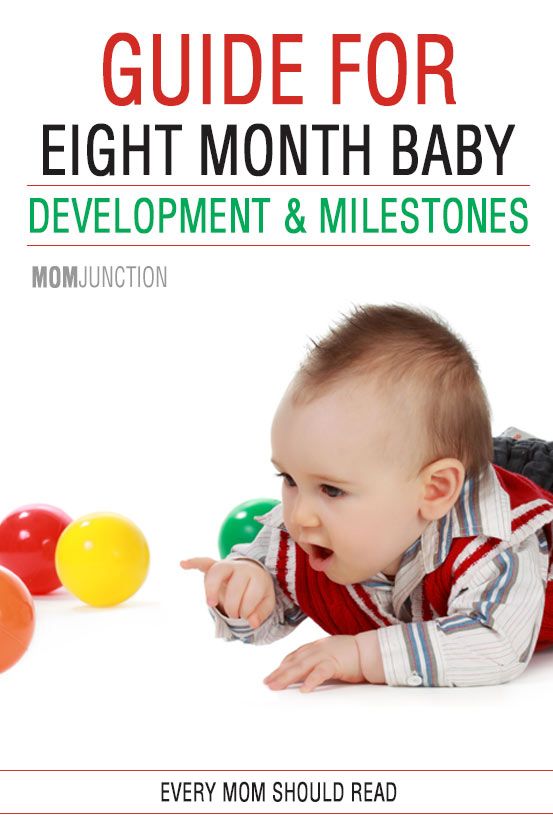 And there's no need to let them have their own device. You'll have an easier time controlling the use of an item that you hold the keys to, so to speak, rather than one your child "owns."
And there's no need to let them have their own device. You'll have an easier time controlling the use of an item that you hold the keys to, so to speak, rather than one your child "owns."
Healthy tips for managing your kids' screen time
Set family guidelines
- Make a family agreement. Talk about when and how each member of your family may use – or not use – screens, discuss digital safety and citizenship, and post your family's guidelines where everyone can see them. (For a personalized plan, try the AAP's free family media plan tool.) Before giving your child their own phone or tablet, agree on the rules, put them in writing, and have both of you sign the document.
- Set clear limits. Be specific about when and where screens are allowed. Some parents reserve the 30 minutes before dinner – when you're trying to get a meal on the table – for screen time, or limit screen use to weekends. It's a good idea to avoid screen use for an hour before bedtime.
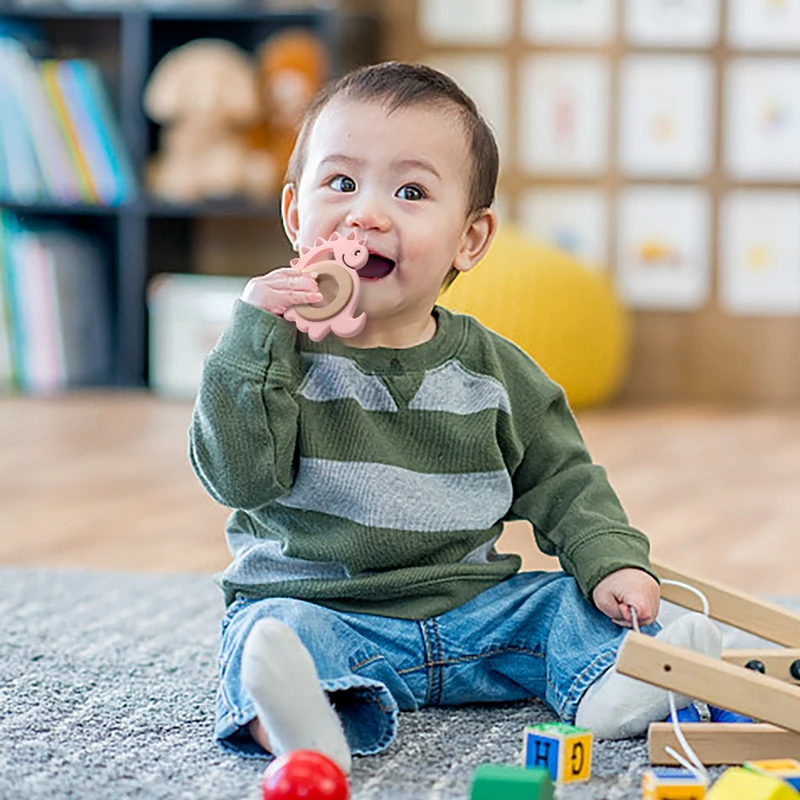 You can also set aside some screen-free zones, such as bedrooms and the table during meals. Find a system that feels fair and doable so everyone in the family can respect the rules.
You can also set aside some screen-free zones, such as bedrooms and the table during meals. Find a system that feels fair and doable so everyone in the family can respect the rules. - Give your kids a heads up. It's hard for kids – especially toddlers and preschoolers – to transition from one activity to another, so getting them to turn off their screens when they're in the midst of viewing can be a challenge. Give them ample warning.
- Create clear consequences. Your child defied a rule on media use? Be sure they know the consequences ahead of time. Many parents take away devices as a consequence.
- Share the rules. Let other caregivers (babysitters and grandparents, for example) know what your media rules are so they can be consistent.
- Monitor your own screen use. Kids learn by example, so if you're responding to every ping and trill of your own device, you have far less authority to limit your child's screen time.
 Instead of mindlessly scrolling through Facebook or distractedly answering work emails while you wait in line or have a snack, engage your child: Play tic-tac-toe, try a round of "I Spy," or just talk.
Instead of mindlessly scrolling through Facebook or distractedly answering work emails while you wait in line or have a snack, engage your child: Play tic-tac-toe, try a round of "I Spy," or just talk.
Stay involved
- Talk to your child. Make screen time a shared activity as much as possible. Pay attention to what your child is watching and playing, and ask questions. Have a family movie or game night and talk about what you saw together. When your child uses a device without you, talk about what they watched or played. When your child starts getting interested in social media, talk about safety, privacy, and digital citizenship.
- Be selective. For young children, avoid programs with a lot of distracting content and fast-paced programs (they don't understand them as well). For all ages, avoid violent content.
- Set up parental controls. Many devices allow you to limit what, when, or how much they can be used.
 You may set separate limits on gaming versus reading time, for example. Or you may set an overall hour/minute limit on screen time for the day.
You may set separate limits on gaming versus reading time, for example. Or you may set an overall hour/minute limit on screen time for the day. - Take charge of devices. Know what apps your child is using. Test apps before your child plays with them. Use the apps together and talk about them. As your child gets older, make sure you own the accounts and passwords so you can control what's being downloaded.
Think beyond screen time
- Offer fun alternatives. If your child is clamoring for more screen time, have fun activities on hand so you're less likely to cave.
- Turn off devices and the television when they're not being used. Background media can interfere with interaction with your child.
- Leave the ipad at home when you're heading to the playground or a playdate or other activity where it won't add to the experience.
- Make sure your child gets plenty of physical activity each day.

- Make sure your child gets adequate sleep for their age.
Screen time is a pretty universal concern these days, so it might help chat with other parents about how their families deal with it. Also check out our collection of tips from parents on limiting screen time at home.
Learn more:
- How your child benefits from play
- How to raise an imaginative child
- 6 secrets to raising a smart toddler
What time do children need to go to bed
Many mothers ask us the question “What time is it better to put the child to bed?”. Let's find out!
The influence of biological rhythms on humans
Despite the fact that technological progress makes a person largely independent of the natural conditions in which he lives, like any creature on the planet, he is subject to the influence of biological rhythms . The most significant of them are circadian rhythms - the change of dark and light hours of the day, day and night. Depending on these rhythms, a person's physical and emotional state, intellectual capabilities change. Such changes are determined by the daily fluctuation in the synthesis of certain hormones. In particular, it is the hormonal background that tells us when it is best to sleep and when to stay awake.
Depending on these rhythms, a person's physical and emotional state, intellectual capabilities change. Such changes are determined by the daily fluctuation in the synthesis of certain hormones. In particular, it is the hormonal background that tells us when it is best to sleep and when to stay awake.
How does melatonin, the “sleep hormone”, work?
Nighttime hormone is called melatonin sleep hormone. It begins to be produced in the body in the early evening, reaches a peak concentration late at night and decreases sharply in the morning. One of the useful functions of this hormone is to regulate the duration and change of sleep phases. It is with the beginning of the synthesis of melatonin at about the third or fourth month of a child's life that the appearance in the structure of sleep of deep and very deep subphases of slow sleep, and the "start" of the biological clock is associated. Before that, the baby lives rather in the rhythm of feeding.
Melatonin causes drowsiness at night. Under its influence, all processes slow down, the body temperature decreases slightly, the level of glucose in the blood drops and all the muscles of the body relax a little. If you go to bed at this moment, then it will be very easy to fall asleep, and the dream will be as deep and calm as possible.
The moment when melatonin is present in the blood in sufficient concentration for falling asleep, we conventionally call the "sleep window". The “Sleep Window” will tell you what time to put your child to bed so that he sleeps for a long time and with high quality. In the vast majority of children from the age of 3 months to about 5-6 years, this moment, favorable for falling asleep, is in the range of 18.30-20.30. The "window of sleep" can last several minutes, or half an hour - it all depends on the child's temperament, the characteristics of the development of his nervous system and physical condition.
VIDEO TUTORIALS
Baby Sleep Lessons
0-7 years old
More
If we missed the "sleep window"?
If the baby does not go to bed at this time, the synthesis of melatonin stops, and the stress hormone cortisol enters the blood instead. Its main function is to maintain vigor. Cortisol increases blood pressure, causes a rush of blood to the muscles, exacerbates the reaction rate, and at the same time it is rather slowly excreted from the body. The excited state persists throughout the night. A child who goes to bed later than the time that is biologically convenient for his body falls asleep more difficult, with protests and tears, and subsequently sleeps shallowly and restlessly. If there is a tendency to wake up at night, then with late bedtime the baby will be wake up especially often . Our grandmothers and mothers often call the action of cortisol the home word "overdone". And indeed - a child who "overshot" his "window of sleep" is very active and it is difficult to put him to sleep.
Its main function is to maintain vigor. Cortisol increases blood pressure, causes a rush of blood to the muscles, exacerbates the reaction rate, and at the same time it is rather slowly excreted from the body. The excited state persists throughout the night. A child who goes to bed later than the time that is biologically convenient for his body falls asleep more difficult, with protests and tears, and subsequently sleeps shallowly and restlessly. If there is a tendency to wake up at night, then with late bedtime the baby will be wake up especially often . Our grandmothers and mothers often call the action of cortisol the home word "overdone". And indeed - a child who "overshot" his "window of sleep" is very active and it is difficult to put him to sleep.
What time should the child go to bed?
So, from birth to about 3-4 months , until melatonin synthesis is established, the baby can be put to bed at night when the mother goes to bed - for example, at 22-23 hours.
But, starting from the age of 3-4 months , we highly recommend finding out your child's "sleep window" and putting him to bed at this favorable moment, starting all preparation for sleep at least 30-40 minutes in advance.
How can you determine what time to put your child to bed?
To determine the "sleep window":
1. Observe. At the same time in the evening (somewhere between 18.30 and 20.30), the baby will show signs of readiness for sleep: he will rub his eyes, kiss on the sofa or chair, yawn, slow down. Movement coordination may be impaired. The gaze stops for a second and becomes directed “to nowhere”. It is this moment that will show mom what time to put the baby to bed. It is at this moment that the child should be already in bed, well-fed, washed, listening to a fairy tale.
This state can last for several minutes, then the baby will experience something like a "second wind". This can be expressed in unnaturally increased activity or in unusual excitability, capriciousness. In any case, such a burst of vivacity will mean that the "window of sleep" is missed.
This can be expressed in unnaturally increased activity or in unusual excitability, capriciousness. In any case, such a burst of vivacity will mean that the "window of sleep" is missed.
It can be difficult to notice signs of readiness for sleep. They may be subtle, and bright lights and noisy environments only help the child hide them. In this case:
2. Calculate convenient time. Normal duration of night sleep for children from 3 months to 5-6 years is 10-11.5 hours. At the same time, small children, as a rule, wake up early - no later than 7.30. If you subtract the age-recommended length of nighttime sleep from your usual wake-up time, you will just get an approximate moment for perfect falling asleep.
3. Finally, just pick up the exact good time by shifting the bedtime by 15-30 minutes every 2-3 days and remembering (or writing down) how long the child fell asleep and whether the night passed quietly.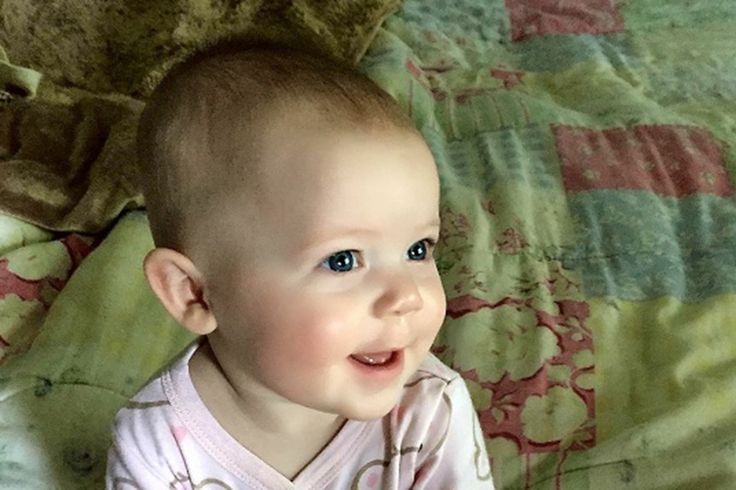
In any case, if the child falls asleep with tears, most likely you put him to bed later than necessary. Analyze his regimen and perhaps the next day put the child to bed earlier than , start the rituals 15 minutes earlier.
Video lesson What time to put the baby to bed?
Subscribe to our YouTube channel so as not to miss new videos!
Changes in daily routine.
It is important not to forget that before the start of a night's sleep, the baby should be awake and tired enough for his age. Therefore, when shifting the regimen to the early side, it is also desirable to shift daytime sleep accordingly and gently wake the child if he sleeps in the last daytime sleep for too long. At some point, it is better to completely abandon the extra daytime sleep, if it becomes difficult to put the child at the right time after it. As a rule, children are ready to completely abandon the 4th sleep at the age of 4 months, from the 3rd - at 7-9months, from 2nd sleep after 15-18 months.
As a rule, children are ready to completely abandon the 4th sleep at the age of 4 months, from the 3rd - at 7-9months, from 2nd sleep after 15-18 months.
Sleep patterns need to be adjusted as you get older. As a rule, after giving up one of the daytime sleeps, it is advisable to shift the time for putting the child to bed at night 30-60 minutes earlier. But at the same time, if at the usual time for several days the child is cheerful, calm, and does not show readiness to sleep, and once in bed, he cannot fall asleep for a long time, it is quite possible that the time has come to put him to bed 30 minutes later.
Early Bedtime Sleep Hormones Stress
Overfatigue Cortisol Melatonin Sleep Window
How much sleep a child should sleep - Sleep norms for children from "Sleep Baby"
Of course, the baby does not owe anything to anyone. Each baby and adult has an individual need for sleep, and the task of parents is to calculate and apply this individual need for a child’s sleep to their life situation.
In this article, we will help you understand if your baby is getting enough sleep. Let's figure out where the sleep norms came from and how to read them correctly and apply them to your situation. Let's analyze and understand how to determine how much sleep your baby needs?
IS THE CHILD ENOUGH SLEEP?
It is very important to make sure your baby gets enough sleep. Lack of sleep, or lack of sleep as we call it, accumulates quickly and has a very negative effect on the quality of sleep and well-being of the child.
In order to say with confidence that the child has enough sleep, parents need: lack of sleep in your baby
MONITOR YOUR BABY'S SLEEP AND RECORD!
The most common mistake parents make when analyzing the sleep situation is the incorrect calculation of the amount of sleep per day. Here are 5 rules to help you make accurate observations of how much your baby sleeps.
1) Be sure to write down all dreams ! In a notebook, notes, special applications, do not rely on your memory or feelings.
2) Count the total amount of sleep per day! As long as you don't divide by day and night, there may be situations where a non-child sleeps at night and sleeps during the day. But keep in mind that daytime sleep and nighttime sleep are not exactly equal, although as they grow up, children adapt to compensate for the lack of one at the expense of the other
3) Do not round! Moms tend to round or write roughly. Don't do this, because the count will "lose" a lot of sleep and you may draw the wrong conclusion. For example, the baby woke up at 15:42, write down at 15:42, not at 15:30!
4) Consider sleeping while eating - on the chest or bottle , because the baby's swallowing and sucking movements remain during sleep.
5) It is important to observe 3-7 days to draw objective conclusions about how much your child actually sleeps.
Keep observations for at least 3 days.
In order to draw correct conclusions, we need statistically significant data
CHILDREN'S SLEEP RATES
Compare your child's sleep observations with sleep guidelines.
Different sources give different norms of sleep and wakefulness for children. What standards does the Sleep Baby team use? These are the standards of the American Academy of Sleep, which came out not so long ago, in March 2015. Scientists from the American National Academy of Sleep studied the opinions of specialists in various fields - from psychologists, neurologists and pediatricians, to somnologists and gerontologists.
The result of their study is shown in the table with sleep norms for children from birth to 5 years
| Age for full-term children | Total sleep per day, hours | At night | Happy | No. of daytime naps |
| 1 month | 15-18 | 8-10 | 6-9 | 3-4 and > |
| 2 months | 15-17 | 8-10 | 6-7 | 3-4 |
| 3 months | 14-16 | 9-11 | 5 | 3/4 |
| 4-5 months | 15 | 10 | 4-5 | 3 |
| 6-8 months | 14. 5 5 | 11 | 3.5 | 2-3 |
| 9-12 months | 13.5-14 | 11 | 2-3.5 | 2 |
| 13-18 months | 13.5 | 11-11.5 | 2-2.5 | 1-2 |
| 1.5-2.5 years | 12.5-13 | 10.5-11 | 1.5-2.5 | 1 |
| 2.5-3 years | 12 | 10.5 | 1.5 | 1 |
| 4 years | 11.5 | 11.5 | - | - |
| 5 years | 11 | 11 | - | - |
It should be noted right away that the sleep rates given in the table are average data on how much healthy children actually sleep. And these norms do not mean that this is how much your child should sleep. Norms are given for reference!
If we carefully analyze the table with sleep norms, we can see a very large limit of normal.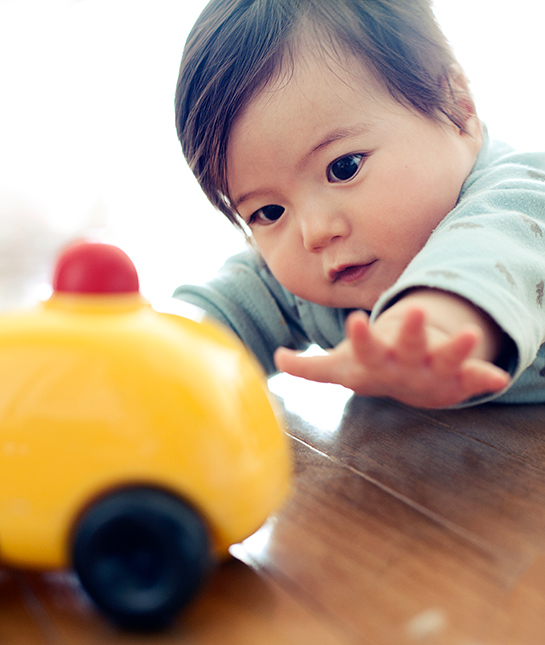 The difference between the upper and lower limits of the norm is very large, up to 3 hours. Why is that? Because each child is unique, and there are genetic features, there are increased physical and emotional stress, there are features of well-being and special sleep conditions, and therefore each person has an individual need for sleep!
The difference between the upper and lower limits of the norm is very large, up to 3 hours. Why is that? Because each child is unique, and there are genetic features, there are increased physical and emotional stress, there are features of well-being and special sleep conditions, and therefore each person has an individual need for sleep!
WHAT AFFECTS EACH CHILD'S INDIVIDUAL SLEEP NEEDS?
- Genetic features. First of all, the individual need for sleep is influenced by genetic characteristics or hereditary predisposition. All people are divided into long sleepers and short sleepers. How to understand what type you are? Answer the question "how many hours of sleep will you get to a state in which you do not experience drowsiness?" If the answer is 8-10 hours, you are a long sleeper; if the answer is 6-7 hours, you are a short sleeper. This feature is passed on to your baby. But not only genetics affects the need for sleep!
- Wakefulness, exercise .
 With increased physical activity, you need more sleep to recover. If the child jumped, ran, moved, swam in the pool or the sea, then the amount of sleep for recovery will be greater. If the child spends quietly wakefulness, then most likely they need less sleep.
With increased physical activity, you need more sleep to recover. If the child jumped, ran, moved, swam in the pool or the sea, then the amount of sleep for recovery will be greater. If the child spends quietly wakefulness, then most likely they need less sleep. - State of health. In some health conditions, children sleep off and recover. And you need more sleep.
- Sleep conditions. It has been proven that at a lower temperature, oxygen access, in the dark, sleep is better.
- Sleep preparation can be stimulating or relaxing.
There is no need to adjust your baby's sleep to any standard. But studies and practice show that deviations from the average by more than 60 minutes in one direction or another are extremely rare.
SIGNS OF LACK OF SLEEP OR LACK OF SLEEP
In general, if a child regularly sleeps 2-3 hours less than “normal”, it is safe to say that he is not getting enough sleep. But even if you fall within the recommended interval, we advise you to check that there are no signs of lack of sleep in the behavior of the baby.
But even if you fall within the recommended interval, we advise you to check that there are no signs of lack of sleep in the behavior of the baby.
To see them, it is enough to closely monitor his behavior and well-being.
From around 6 months of age, the following behaviors tend to indicate that the baby is sleeping too little for her age:
Baby falls asleep every time in the car or stroller
It is normal for babies up to 3-4 months to fall asleep immediately when starting to move. But a well-sleeping child older than 4-6 months is unlikely to always fall asleep on a walk or in the car, unless the trip coincided with the start of his usual regular sleep.
It is important to remember that the child should sleep at home in his bed in darkness and silence, and sleep in motion is of poor quality.
The child does not wake up by himself until 7.30 am
Here it is necessary to make a reservation that normally children under 5 feel better if they live according to an early schedule, in accordance with the biological clock of the body. And this means that the child should sleep at 19.30 - 20.00 in the evening and wake up in the interval from 6.00 to 7.30 in the morning. Such children wake up fully asleep, and in a good mood. If a one-year-old child sleeps until 9 or 10 in the morning, this is a sure sign that he does not go to bed on time, or his nightly sleep is very restless and does not restore strength enough. In other words, such a baby lacks quality timely sleep
And this means that the child should sleep at 19.30 - 20.00 in the evening and wake up in the interval from 6.00 to 7.30 in the morning. Such children wake up fully asleep, and in a good mood. If a one-year-old child sleeps until 9 or 10 in the morning, this is a sure sign that he does not go to bed on time, or his nightly sleep is very restless and does not restore strength enough. In other words, such a baby lacks quality timely sleep
VIDEO TUTORIALS
Baby Sleep Lessons
0-7 years old
More
During the day the child is naughty, irritable or looks overtired.
Regular lack of sleep in the child's body increases the level of the stress hormone cortisol. This hormone is slowly excreted from the blood and affects the increased excitability and the difficulty of inhibition processes in the already tender and undeveloped nervous system of the baby.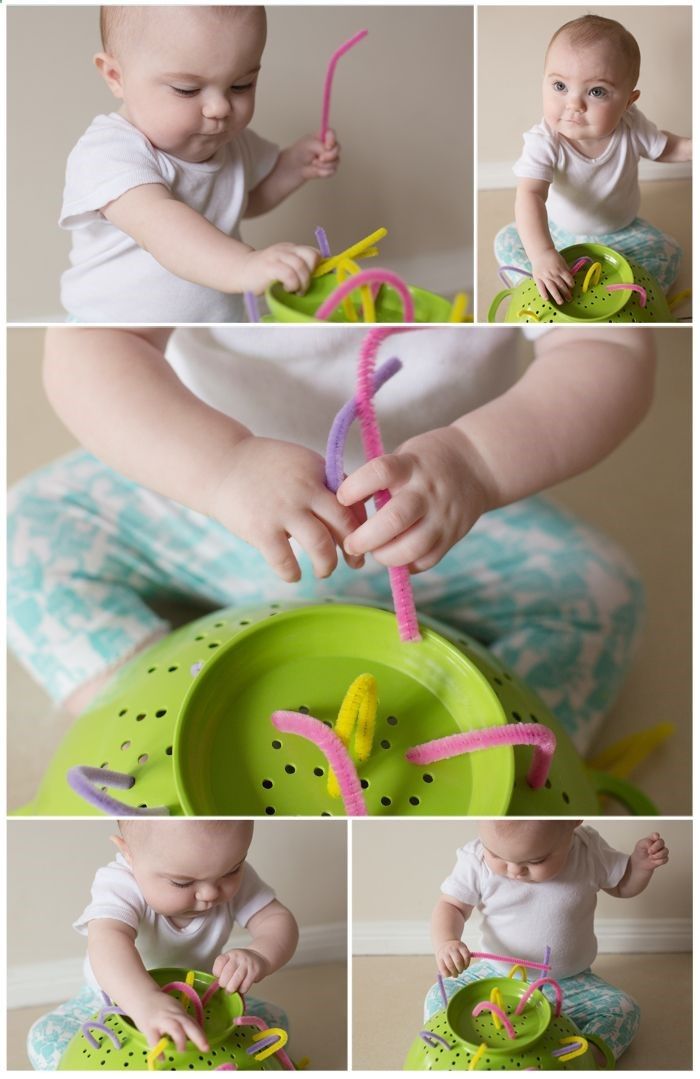
Quite often it happens that a “difficult” child becomes calm and docile after parents help him correct the regimen, improve the quality and increase the amount of sleep.
Sometimes, once every few days, the child suddenly falls asleep for the night much earlier than usual
For example, he may "pass into the night" from the last day's sleep. Thus, the child's body itself tries to make up for regular lack of sleep. Good sleep hygiene means that the child should fall asleep and wake up at the same time.
The child consistently gets up before 6 am
Paradoxically, getting up too early is often the result of accumulated lack of sleep, overwork, or too late bedtime. The principle “the later you go to bed, the later you get up in the morning” most often does not work with children until about school. They wake up early anyway, and simply don't get enough sleep if they are put to bed too late.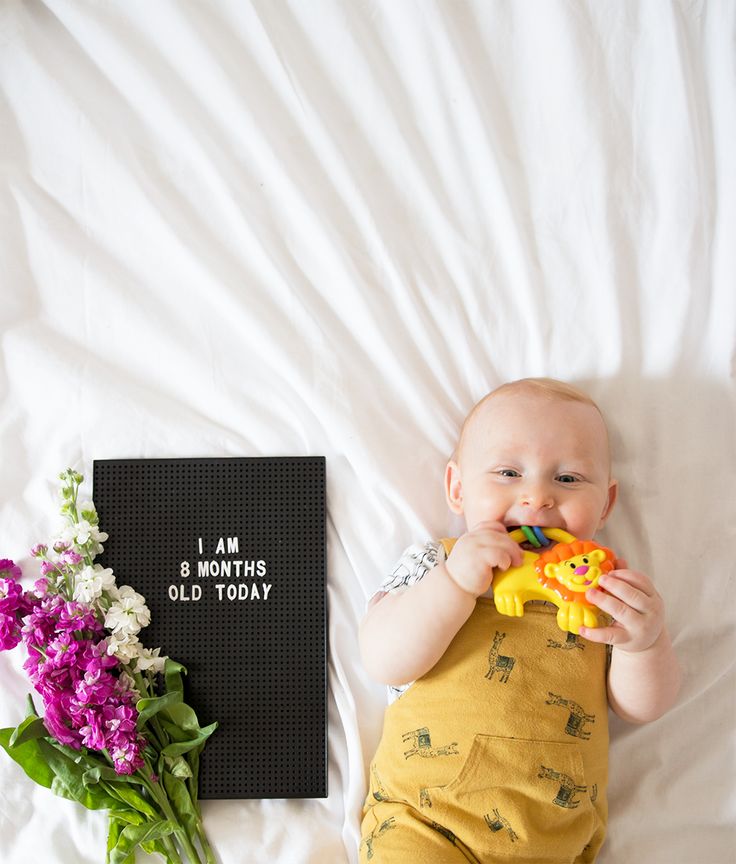
The child always falls asleep and wakes up with tears
If there are no medical problems, then protests and tears "around dreams" usually indicate that the child does not go to bed on time, is overworked before bedtime, or does not get enough sleep during sleep. This does not apply to very young children (up to 4-5 months), who can become very hungry during a long sleep.
If at least one of the points is correct in your case, try to increase the duration of your baby's sleep by at least 10-15 minutes a day. The simplest thing is to put it down at night a little earlier.
Pay attention to the fact that not only the amount of sleep matters, but also the quality of sleep! Therefore, in the answer to the question “How much should a child sleep?”, There are not only numbers of recommended sleep rates.
HOW MUCH SLEEP AND WAKE DOES A CHILD NEED?
If you look at the numbers of the sleep rate in a rounded manner, we will see the following patterns:
- in 1 month of life the baby sleeps about the same number of hours day and night: 9hours at night and 8 hours during the day for 4-5 naps
- already by 2 months of life night sleep accounts for a large proportion (9.
 5 hours at night and 6.5 hours during the day)
5 hours at night and 6.5 hours during the day) - the amount of night sleep increases to 11 hours by 4-5 months of life and remains unchanged until 5 years (the norm of night sleep in children from 4-5 months to 5 years is an average of 11 hours)
- the number of naps is reduced gradually - 3 naps are maintained up to 9 months, 2 naps are needed until 1.5 years
- the need for daytime sleep disappears in 4 years , but it is important to keep "quiet time"
Wake time grows with your baby. In the first month of life, the child is awake for 15-45 minutes. Gradually, the WB increases and already at the age of 5, children can withstand up to 11-13 hours of wakefulness.
Remember that the time of wakefulness is not the same during the day, it changes: in the morning, after a night's sleep - the shortest; in the evening, before a night's sleep - the longest!
Video lesson How much sleep should a child have? Subscribe to our YouTube channel so as not to miss new videos!
Most often, we are approached by parents of babies with lack of sleep. We are trying to “sleep off” the baby and bring the regimen in accordance with his biological rhythms and individual need for sleep. But if the child sleeps a lot, parents are usually happy and rarely ask for help
We want to warn you - too much sleep can be dangerous!
If your baby sleeps more than normal before the age of 1 month. If a newborn sleeps too long, he gets dehydrated and is at risk of weight loss. Therefore, it is important not to let him sleep more than three hours during the day and more than 5 hours at night. Wake up and feed the baby!
If your baby is over 1 month old and sleeps more than normal. Observe and not jump to conclusions:
- Watch for at least 7 days! This may be a temporary phenomenon, the baby can "sleep off" after an increased load, malaise.

Learn more





